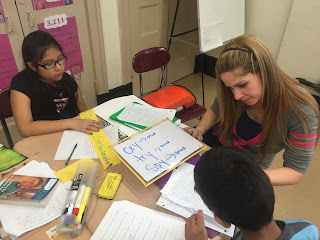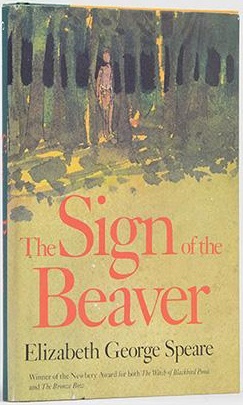November
& December Read Aloud
What’s New in Read
Aloud?
This
month we will be continuing our work with the text, There’s a Boy in the
Girls’ Bathroom. This will take us through much of November. At the close
of the month we will begin a new novel which will take us through to December.
During
Read Aloud we will be reading a novel, The Sign of the Beaver written by
Elizabeth George Speare. This novel is a historical
fiction text. This means that although the characters and events are fictional,
the setting takes place during a particular period of history. While reading
historical fiction it is important to keep in mind that the problems that the
character is dealing with are specific to the time period addressed in the
text. Basically, the problem that the main character is facing could not be a
problem that a person would be faced with in present time.
During
this unit students will be responsible for:
1) Completing
assigned extended response questions in the given response packet.
These responses will be collected periodically and
graded. The grading criteria for these responses is as follows:
0- point
response includes:
· Does not answer the
prompt/question
· No answer
· Hand-writing is so messy that the
answer is too difficult to read
· Includes many grammar mistakes
making the answer too difficult to read
1- point
response includes:
· A literal explanation or retell of
the prompt/question
· Little details or information from
the text to support the explanation
· Incomplete sentences
2-point
response includes:
· A correct inference (idea) from
the text that answers the question/prompt
· An explanation of your inference
(idea) in your own words
· Specific details from the text
that proves your inference, such as a quote
· Complete sentences and correct
punctuation
It is
very important for students to adhere to the criteria and aim to receive a ‘2’
for their responses. This practice will get them into the habit of accurately
answering an extended response question and supporting it with evidence. This
skill is necessary in order to be successful on the ELA exam.
2) Completing
assigned vocabulary work. Students received a vocabulary packet, containing a
graphic organizer to help them apply this word in various ways. They are
required to use the word in a sentence, write the definition, draw a picture of
and write an example of the vocabulary word.
3) Vocabulary
Quiz- Knowledge of the vocabulary words will be assessed every week. Students
should be prepared, every Friday, for a vocabulary quiz.
The
Sign of the Beaver Vocabulary Words
· Survivalist
· Prejudice
· Naïve
· Clever
· Stubborn
· Arrogant
· Wise
· Skeptical
· Competitive
· Bitter
In addition,
due to the fact that this genre isn’t what students are used to reading, this
text is full of ‘tricky parts’. Throughout the lesson we will identify these
parts and apply strategies to work through them in order to ensure
comprehension. Students will be encouraged to apply these strategies when
reading independently.

























